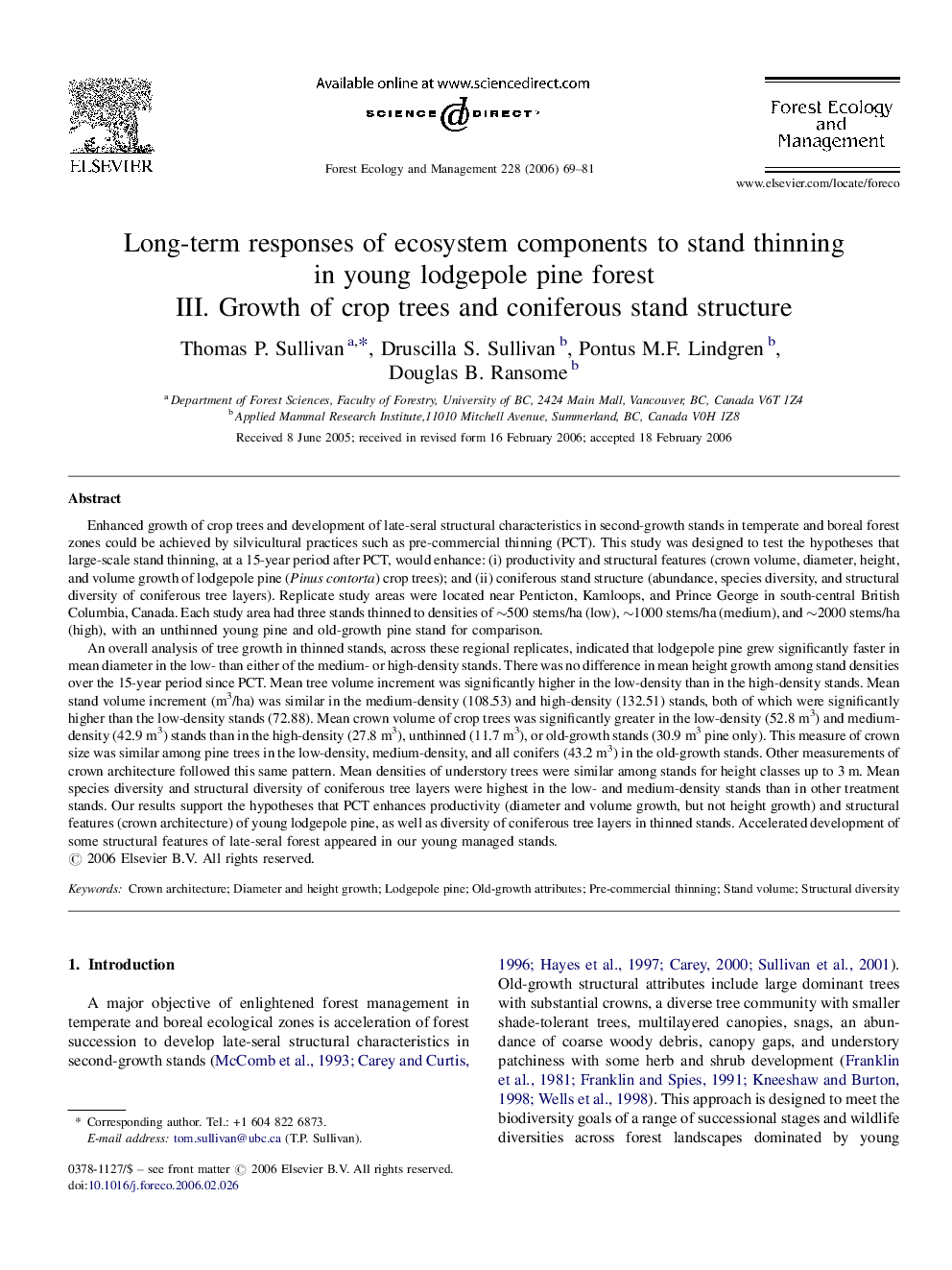| کد مقاله | کد نشریه | سال انتشار | مقاله انگلیسی | نسخه تمام متن |
|---|---|---|---|---|
| 90893 | 159407 | 2006 | 13 صفحه PDF | دانلود رایگان |

Enhanced growth of crop trees and development of late-seral structural characteristics in second-growth stands in temperate and boreal forest zones could be achieved by silvicultural practices such as pre-commercial thinning (PCT). This study was designed to test the hypotheses that large-scale stand thinning, at a 15-year period after PCT, would enhance: (i) productivity and structural features (crown volume, diameter, height, and volume growth of lodgepole pine (Pinus contorta) crop trees); and (ii) coniferous stand structure (abundance, species diversity, and structural diversity of coniferous tree layers). Replicate study areas were located near Penticton, Kamloops, and Prince George in south-central British Columbia, Canada. Each study area had three stands thinned to densities of ∼500 stems/ha (low), ∼1000 stems/ha (medium), and ∼2000 stems/ha (high), with an unthinned young pine and old-growth pine stand for comparison.An overall analysis of tree growth in thinned stands, across these regional replicates, indicated that lodgepole pine grew significantly faster in mean diameter in the low- than either of the medium- or high-density stands. There was no difference in mean height growth among stand densities over the 15-year period since PCT. Mean tree volume increment was significantly higher in the low-density than in the high-density stands. Mean stand volume increment (m3/ha) was similar in the medium-density (108.53) and high-density (132.51) stands, both of which were significantly higher than the low-density stands (72.88). Mean crown volume of crop trees was significantly greater in the low-density (52.8 m3) and medium-density (42.9 m3) stands than in the high-density (27.8 m3), unthinned (11.7 m3), or old-growth stands (30.9 m3 pine only). This measure of crown size was similar among pine trees in the low-density, medium-density, and all conifers (43.2 m3) in the old-growth stands. Other measurements of crown architecture followed this same pattern. Mean densities of understory trees were similar among stands for height classes up to 3 m. Mean species diversity and structural diversity of coniferous tree layers were highest in the low- and medium-density stands than in other treatment stands. Our results support the hypotheses that PCT enhances productivity (diameter and volume growth, but not height growth) and structural features (crown architecture) of young lodgepole pine, as well as diversity of coniferous tree layers in thinned stands. Accelerated development of some structural features of late-seral forest appeared in our young managed stands.
Journal: Forest Ecology and Management - Volume 228, Issues 1–3, 15 June 2006, Pages 69–81